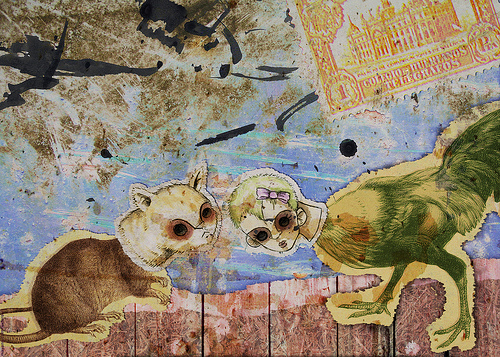Recent developments in biology, for example, now enable gene modification in unprecedented precision and low cost. This has created calls for bioethicists and social scientists to join the discussion on how these new technologies should or should not be used.
Who decides what kind of research or medical procedures are acceptable, in an age of cutting-edge biotechnological invention that concerns the lives and bodies of us all? In the recent decades, the common approach in bioethics has been to start from the principle of informed consent and a utilitarian risk analysis that calculates the risks and benefits of the situation (Zylinska 2009). The goal has been to come up with a set of universally applicable rules put into use in the practical work of caring for patients and in executing research projects (Zylinska 2009).
As a result, we often act as the bioethicists of our own lives. I can tap on my iPhone to show I am an organ donor, and when I visit a doctor, I am asked again a series of questions on the use of the various pieces of data that my visit leaves behind. This kind of focus on the individual and individual choice relies on assumptions about humanity and action, which have also been widely criticized. One of the many prominent critics of mainstream bioethics is the philosopher and feminist theoretician Rosi Braidotti, who calls her own approach posthuman ethics.
In August 2018, Braidotti gathered around her academics, activists and artists from various backgrounds for her course Posthuman Ethics, Pain and Endurance, held at the University of Utrecht. The aim of the course was to achieve a cross-pollination of ideas: Should we modify entire ecosystems to promote human health? What kinds of diseases should gene therapies target, and who has access to treatment?
These questions are not about whether the use of a particular technology is right or wrong in general; the questions are meaningless unless they also describe the specific situations and networks of relations where the technologies are used. Recent developments in biology, for example, now enable gene modification in unprecedented precision and low cost. This has created calls for bioethicists and social scientists to join the discussion on how these new technologies should or should not be used.
These discussions partly stem from the will to avoid heated public debates on genetic engineering. The public has expressed doubts towards what they see as the secretive workings of scientists in the field of biotechnology (see e.g. Meyer 2017). Even so, partly the calls for discussion have arisen from anxiety felt around the discovery of a technology seen as profoundly transformative.
One of the discoverers of the method in genome editing, Jennifer Doudna, describes in her autobiography on how she slowly started to realise the implications of her invention, as she woke up to dreams about an unstoppable wave (Doudna & Sternberg 2017). Both concerns reflect the ways in which the preceding discussion around ethical and societal issues in biological research has fallen short.
Reducing ethics into a set of rules will lead to abstractions, which hinder actual critical ethical debate and do not leave space to ask where the ethical questions come from.
One solution has been to add societal themes to bioethical considerations. In Braidotti’s view, however, it is not enough to add new dimensions to the risk calculations only. Braidotti claims that the aim to create universalizable rules to ethical frameworks is misguided from the start. Ethics, according to her, is about how people and things exist together and so should consider itself with relations and their configurations, not about creating rules (Braidotti 2018). Reducing ethics into a set of rules will lead to abstractions, which hinder actual critical ethical debate and do not leave space to ask where the ethical questions come from.
In many ways, Braidotti’s critique aligns with those that have claimed that the field of bioethics too freely accepts a role in legitimating the use of new technologies in the way the biotechnological industry has decided to use them (see e.g. Schick 2017). The posthuman approach to bioethics joins those who have already called for a wider debate on genome editing that would look critically at the way the questions presented by the industry have been framed (see Jasanoff, Hurlbut & Saha 2015.)
Biotechnological innovations, such as genome editing, are parts of and born in power relations with human and non-human things. Sidelining the discussion on how biotechnologies engage with world around them leaves bioethical discussions unable to account for the actual consequences of their use. This call for a more relational and situated bioethics does not lend itself easily to the production of rules that could be swiftly applied to the practical use and application of these technologies.
“We are not in this together,” proclaimed Braidotti in Utrecht. Or rather, “we are in this together, but we are not the same”. According to her, the claims of joint humanity are eventually counterproductive. She sees the concept of humanity as not a neutral term, but describing a very specific set of circumstances. A claim that humanity is universal obscures differences. In the end, it only looks at the issues at hand from the point of view described as faux-universal concept of the human. In Braidotti’s words, human is a “term that indexes access to specific powers, values and norms, privileges and entitlements, rights, and visibility” (2018).
The post-human aspect of Braidotti’s ethics refers both to a call for paying attention to that which is not human as well as Braidotti’s critique towards how the humanistic subject is constructed and seen as the measure of all things (Braidotti 2013).
In practice, this would mean asking who are ticking the boxes on consent forms, what the situations that make their particular choices possible are, and how this connects to the rest of the world. This relationality is a key element of what is post-human about Braidotti’s posthumanism. She encourages thinking about the ways in which humans intertwine both with each other and with various non-human others: animals, technologies, environments, etc.
What is posthuman about this is extending the scope of attention to that which is not human. It is necessary to look into the connections and relations between the biotechnologies, people affected by them, and the environments in which this all happens.
References
Braidotti, Rosi. 2013. The Posthuman. Cambridge: Polity.
Braidotti, Rosi. 2018. Posthuman Ethics, Pain and Endurance. Summer School, University of Utrecht, 20–24 August 2018
Doudna, Jennifer & Sternberg, Sam. 2017. A Crack in Creation: Gene Editing and the Unthinkable Power to Control Evolution. Boston: Houghton Mifflin Harcourt.
Jasanoff, Sheila, Hurlbut, Benjamin J. & Saha, Krishanu. 2015. CRISPR Democracy: Gene Editing and the Need for Inclusive Deliberation. Issues in Science and Technology, 32:1.
Meyer, Morgan. 2017. “’Participating means accepting’: debating and contesting synthetic biology”. New Genetics and Society. 36:2, 118–136.
Schick, Ari. 2017. Bioethics and the legitimation/regulation of the imagined future. In Gert Verschraegen, Frederick Vandermoere, Luc Braeckmans & Barbara Segaert (eds.) Imagined Futures in Science, Technology and Society. London; New York: Routledge.
Zylinska, Joanna. 2009. Bioethics in the Age of New Media. Cambridge, Mass.: MIT Press







